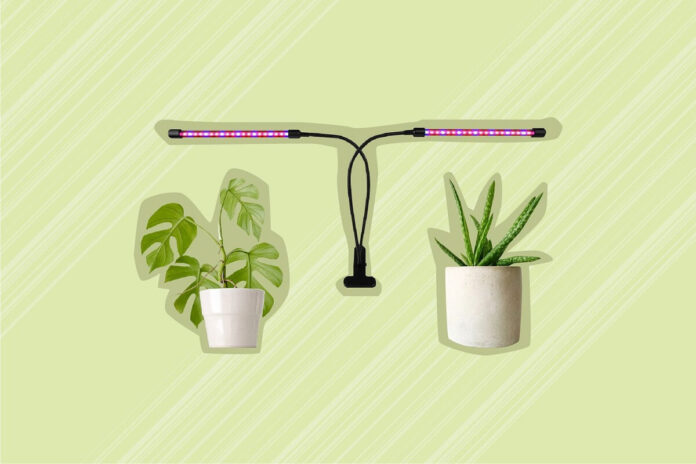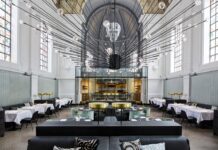In case of continuous overcast days in the greenhouse, in order to ensure production, growers will use horticultural LED grow lights to supplement light for plants.
Read on and let us learn about what are the light-filling technologies in greenhouse production.
In-canopy Light Filling Technology
In-canopy light supplement technology is a technology in which horticulture grow lights are placed inside the canopy of plants, and the canopy volume is irradiated vertically to the maximum extent.
The traditional upper canopy lighting is beneficial to the development of the upper leaf layer of high-density cultivated crops in a controlled environment to maximize the light emitted into the top.
The lower leaves of canopy vegetation shade each other, which seriously limits productivity and flat crop yield.
In-canopy lighting reduces the influence of mutual shading of leaves on dense and vegetative cowpeas because the continuous light of the underlying vegetation runs through the whole development process of leaf-eating crops.
Most crops are shade plants. For crops planted at high density, shade avoidance reaction will lead to redistribution of energy, resulting in crop yield reduction.
Read Also: Apartment Talks: Top Signs That You Are Ready To Change Apartments
High-density cultivation of flat-leaf crops causes the problem of mutual shading. Therefore, the upper leaves of the plant canopy shade the lower leaves, which reduces the overall productivity of crops.
In order to solve this problem in the cultivation room, the light intensity of the top lamp group needs to be increased, but this is neither economical nor effective.
The technology of using small-sized, low-power lamps installed in three-dimensional space to cultivate cowpeas around the lamps is called canopy lighting technology.
This technology can illuminate the inner part of the flora and keep most leaves in the canopy productive. The comparison between canopy irradiation and high-intensity top lamp irradiation shows that 75% of light energy can be saved under similar productivity.
Then, the related variables of high-density plant planting to improve productivity were studied, including lamp orientation, total light energy, photoperiod and CO2 concentration. In-canopy lighting has the potential to significantly reduce energy consumption by cultivating crops in a controlled environment.
Vertical Side Light Filling Technology
Sidelight supplements and canopy light supplements are new ways of greenhouse light supplements, which can make up for the deficiency of top light supplements.
When topping up the light, most of the light is intercepted by the uppermost leaves, which makes the tall vegetables in the greenhouse receive light evenly from top to bottom, and the light received by the leaves in the low position is obviously less than that of the upper leaves, which greatly reduces the promotion effect on net photosynthesis and yield.
The research shows that the uniform distribution of irradiation in the whole canopy is beneficial to plants, and the light quantity of each leaf should be between the light compensation point and the saturation point, and the natural light energy penetrating through the canopy should be increased to improve the yield.
Partial side light supplements instead of top light supplements can improve crop yield and quality to a certain extent, which may be due to the fact that top light supplements can’t make full use of photosynthesis to obtain energy.
The lateral vertical supplementary light increases the distribution of vertical light, which makes the low leaves have a positive assimilation effect, and leaves make more effective use of supplementary light sources.
Because of the advantages of low heat generation, low voltage and firmness, and its unlimited shape and length, the greenhouse growth lamp is especially suitable for side light supplement and canopy light supplement.
Compared with 62% high-pressure sodium lamp and 100% high-pressure sodium lamp, 38% horticultural LED grow lights (80% red, 20% blue) supplemented with side light significantly increased the leaf area, dry weight distribution ratio, and total photosynthetic capacity of the lower layers (third and fourth layers) of cucumber by 23.4%, 5.0% and 36.1% (third layer
Massa et al (2005b; 2006) developed a combined LED lighting Array, which can be used as a whole suspended light source and can be used for side lighting or canopy lighting.
Stereo Multilayer Lighting System
Multi-layer cultivation is a development direction of greenhouse production technology. Vertical production of more than two layers of plants on a unit area of land will increase the land use efficiency over time.
Multi-layer lighting systems came into being because the three-dimensional multi-layer cultivated plants could not catch enough sunlight (mainly the plants below the top layer) and needed to fill the light. Generally, the grow light strip is used to fill the light, with the automatic control system.
Summary
According to the needs of plants, choose the appropriate way to fill light. As we know, horticultural LED grow lights are used as auxiliary equipment to help plants make up for light.
Now, what we need to know is where and how to make it up, so that greenhouse plants can grow better with light!









